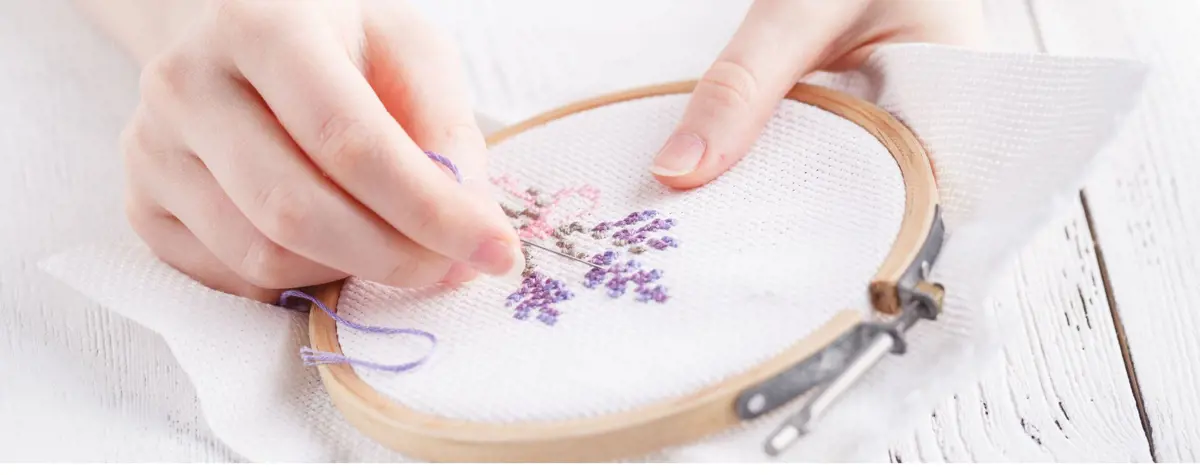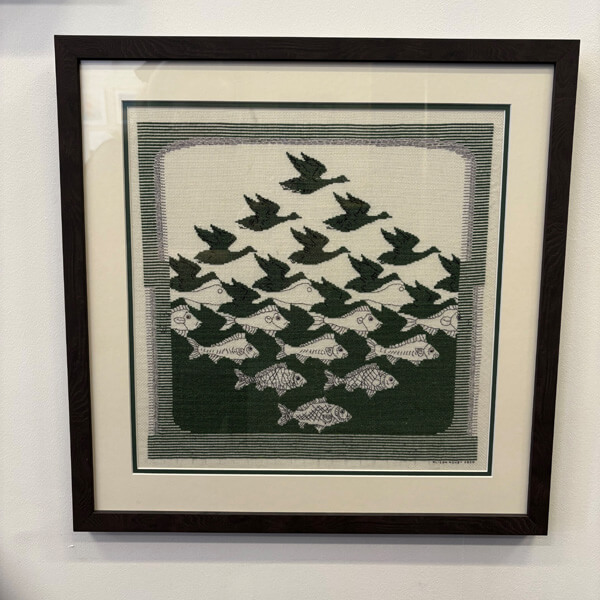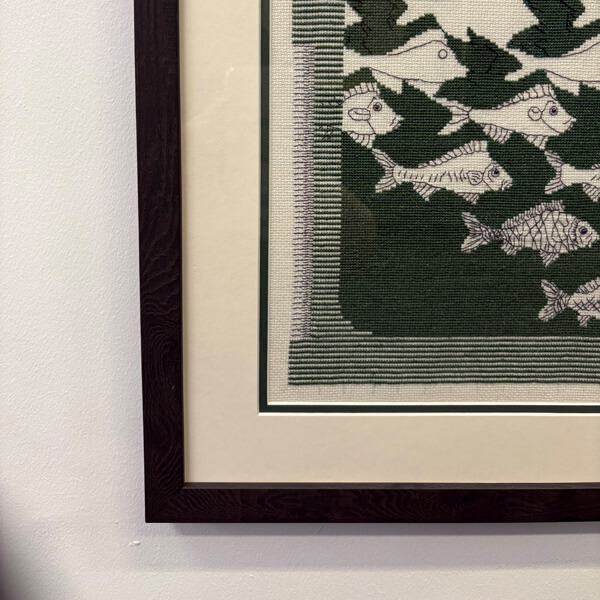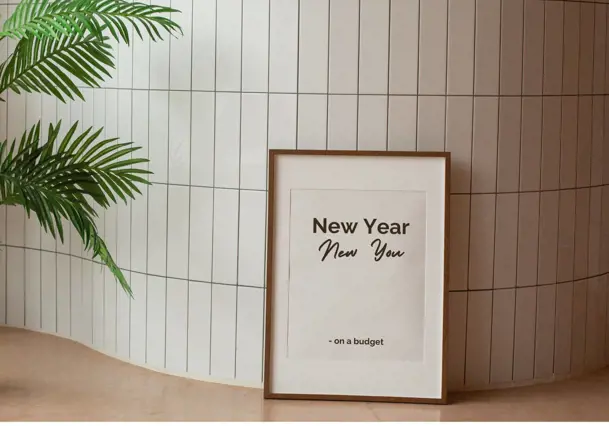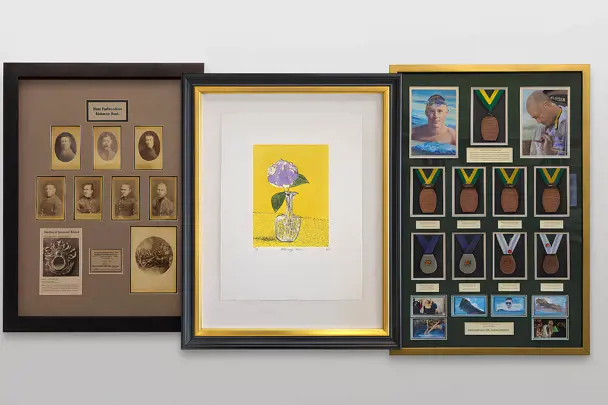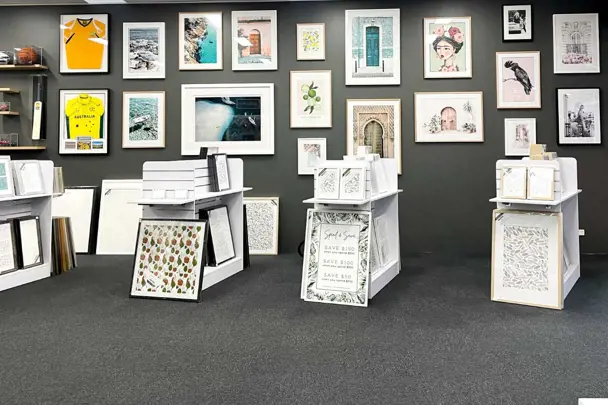Finished your embroidery, needlework, tapestry, Diamond Dotz, cross-stitch or long-stitch? It is time to have it framed so you can enjoy it on your wall.
When selecting frames for embroidery, your choices are like those when selecting frames for paper-based artwork. But there are some subtle and important differences to consider.
In this article we will tell you what you need to know when creating the perfect embroidery frame.
What are Embroidery, Needlework, Tapestries & Diamond Dotz Crafts?
What is Embroidery?
Embroidery is a handicraft of decorating fabric and other materials using a needle to apply a thread or yarn. Traditionally, fabrics used included wool, linen and silk. As sewing techniques have evolved, so has the potential of embroidery art.
Most modern embroidery continues to be fashioned from these materials, although with the addition of cotton, rayon and novelty yarns. Embroidery processes include chain stitch and couching or laid work, much of which is produced using computerised embroidery machines.
What is Needlework?
Any decorative sewing or textile art created with the use of a needle can be described as needlework. This simple categorisation covers a range of handiwork including quilting, crochet, knitting, sewing, needlepoint, tatting, macramé and lucet.
Needlework was traditionally a female pursuit, especially in the Victorian age. However, over time, more demographics have come to enjoy the activity as a hobby, especially without limitation of the types of household items that can receive needlework treatment.
Find out how to frame cross stitch, needlework and other similar handicrafts below.
What is Tapestry?
A tapestry is hanging textile art traditionally woven with the use of a loom. Depending on the size of the craftwork, this can be handheld or machine-operated device to create a beautiful work of art. While large pieces of embroidery can be sometimes referred to as tapestry, both types of handiwork can be generally separated into individual categorisations.
Decorative tapestry has been traditionally used to display commemorative murals, symbolic emblems and coat of arms. For royals, such tapestries were usually commissions to be publicly displayed and carried between palaces. These days, tapestry of any size can be stretched and framed for display in any part of your home.
Diamond Dotz
Diamond Dotz ® are a new hand-crafting process where designs are created with a sticky printed image surface using a selection of coloured beads with tiny "diamond" facets. Through careful application, this produces a stunning, sparkle effect that is both simple and easy to achieve at home.
Selecting the perfect framing combination
As with traditional picture framing, there are a number of considerations you need to make as part of the framing process.
|
|
Frame selection
This is the easy part, except the where you need to choose from hundreds of frame options. Most embroidery, needlework, tapestry or Diamond Dotz crafts can comfortably fit within the depth of most frames (unlike deep canvases or memorabilia objects).
The three most important things to consider when choosing a frame are:
- selecting one that complements the colour and style of your work
- considering where it will be hung (style and size)
- your personal taste.
For more information about how to select framing, read our article on the Four Corners of Framing.
Matboard
The matboard can easily be added to your work but should you wish to add wadding or quilt batting to create a 3-D quilted effect, avoid adding a mat or glass. This wadding will stretch and flatten an uneven surface which occurs in some needlework and tapestries. When achieving this quilted effect, we do not recommend adding a matboard or glass. Without glass the 3-D quilted effect is achieved but the inner edge of the mat will also push forward because there is no glass to hold it in place.
Otherwise, if adding glass, you can freely choose a matboard colour to suit your handicraft. Learn more about selecting mats here.
Glazing
By adding glass or clear acrylic you add a level of protection against dust, fingerprints and other damaging marks. As with most other artworks you can choose from clear glass, non-reflective glass, UV glass and museum glass depending on the look and level of protection required. Full details about these options are covered in our glass selection article here.
Alternatively, you may choose not to add glass where you want the texture of your work to ‘escape’ your frame by incorporating the 3-D quilting effect. That is fine too but we advise against adding a matboard, because without glass, there is no protection from marks and scratches and nothing to hold the matboards inner edge pushing forward.
Nesting
Having invested so much of your free time creating your personal handicraft, you may want it keep it in pristine condition as it takes pride of place on your wall. This is why we often nest your stretched craft so it sits snug in your frame, with no damaging glues or adhesives risking long-term damage. The process of nesting is best explained by one of our experienced framers, Meagan.
How we frame handicrafts
Firstly, your handicraft is stretched over a lightweight, acid-free foamcore board and pinned down the sides. When pinning, we use stainless pins, so they do not rust and are longer lasting. The only exception to the pinning method is when we frame Diamond Dotz which are instead mounted to an adhesive foamcore and trimmed to size.
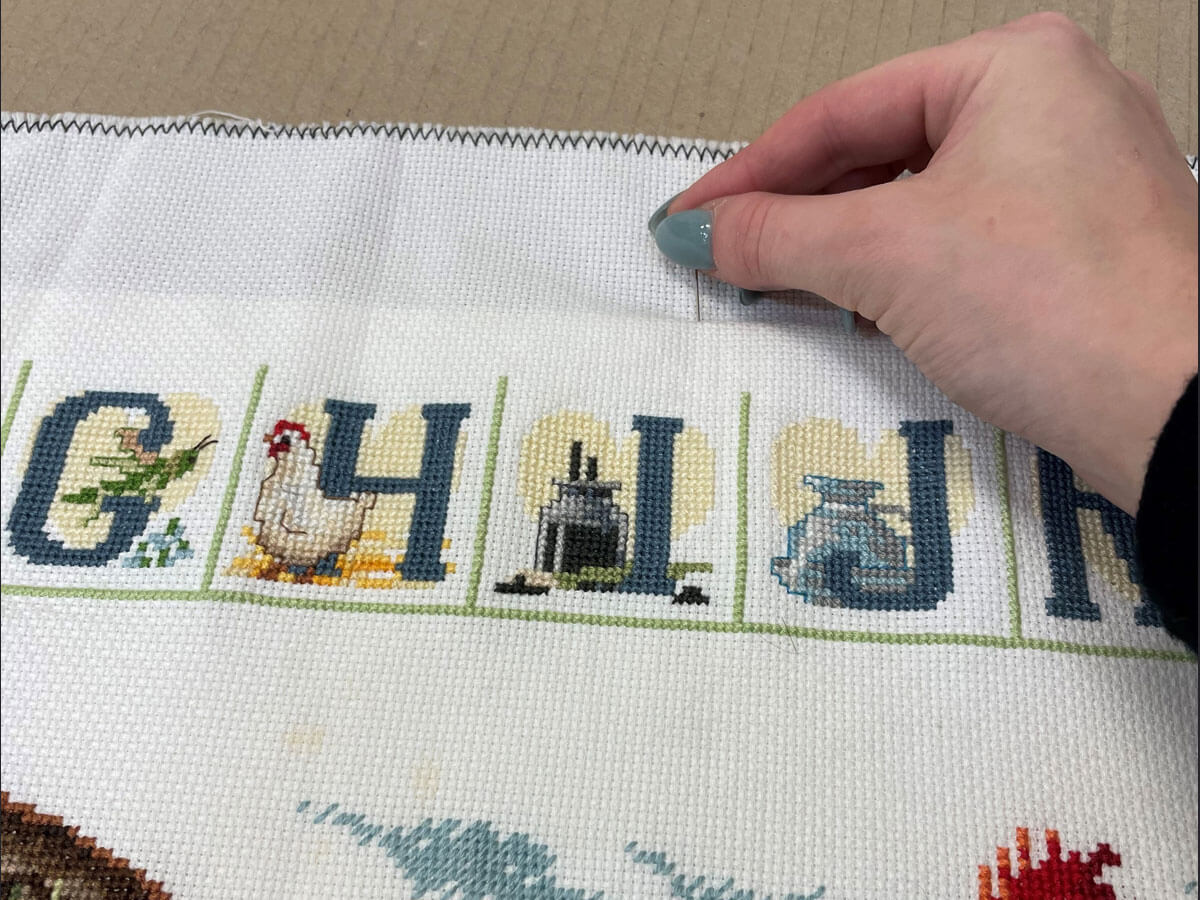
Following this, we layer the structure with mats to both hide and protect the pins. To ensure you work remains undamaged, we do not use any glue or double-sided tape to secure your handiwork.
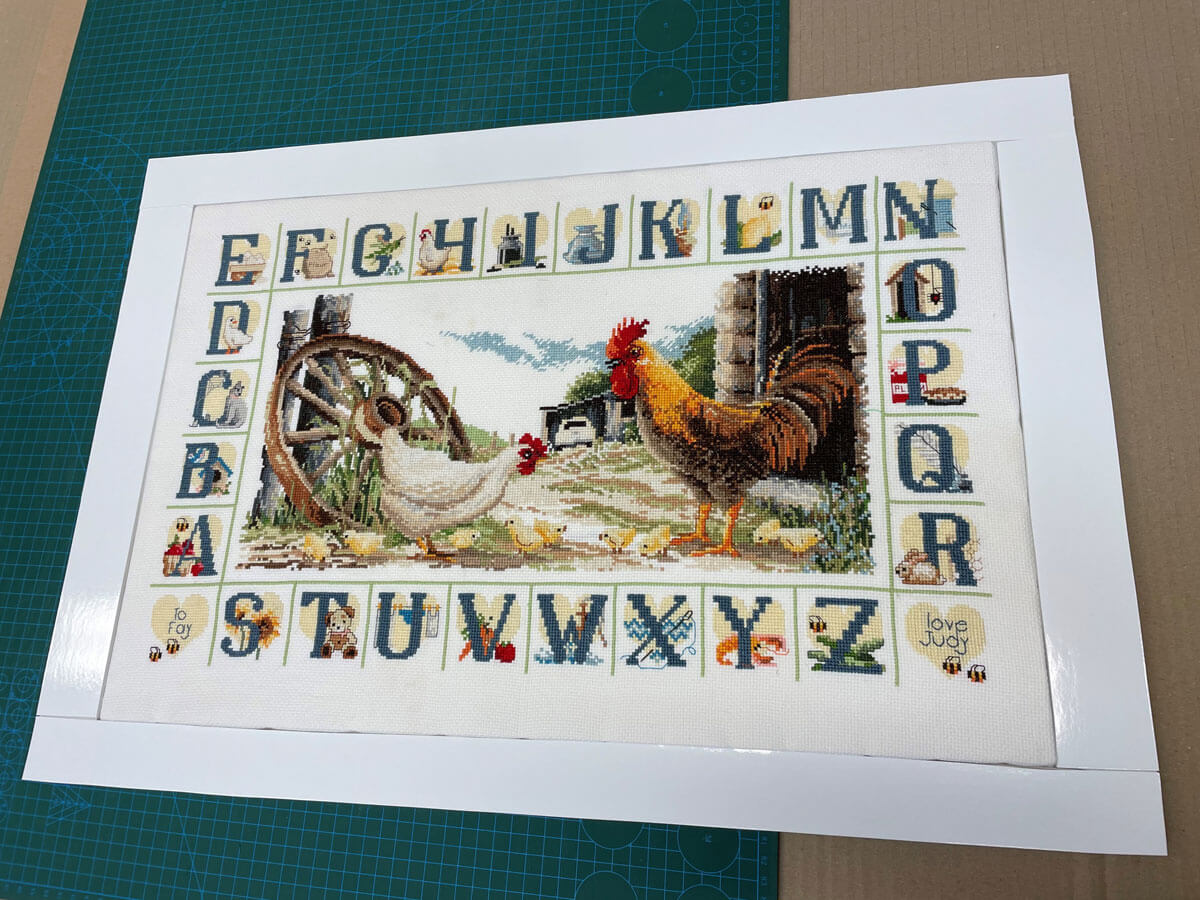
We then add a frame of your choice with the glass option selected (if any) to create the style to match your work. By now it is starting to look like a proper handicraft photo frame.
Finally, the back of the frame is sealed to protect the work and we add a hanger that allows it to sturdily hang on your wall.
To find out more about our handicraft and embroidery framing services, contact us using the form below or drop into a Frame Today store to speak to an expert consultant!
